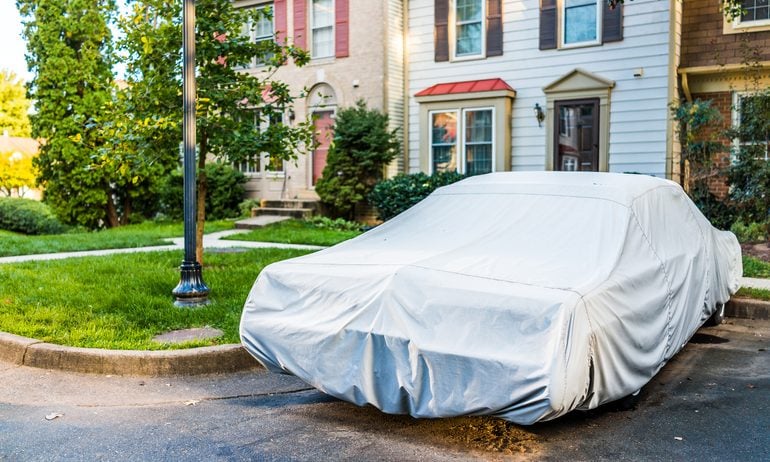How to Reduce, Pause or Cancel Your Car Insurance
You can suspend, cancel or reduce your coverage — or remove yourself from a policy temporarily.

Many, or all, of the products featured on this page are from our advertising partners who compensate us when you take certain actions on our website or click to take an action on their website. However, this does not influence our evaluations. Our opinions are our own. Here is a list of our partners and here's how we make money.
Putting your car insurance on hold can be a good way to save money if you have an out-of-use vehicle. But it’s not as easy as halting your Netflix subscription. In addition, your options may be limited depending on why you’re taking a hiatus from driving the vehicle or whether you have a car loan. If you still use the car at all, you’ll want to keep it insured to stay legal and financially protected — and you're likely to pay a lot more for coverage once you restart it again.
Where it concerns your auto insurance, there are five main options to explore:
Reduce your coverage.
Suspend your coverage.
Remove yourself from a policy.
Cancel your policy.
Reducing your coverage
Pros | Cons |
|---|---|
|
|
Cutting back coverage is a good alternative if you’re not eligible for suspension and lets you avoid canceling your policy. That way, you can probably prevent your hiatus from being called an insurance lapse, which would likely result in higher rates later. Confirm this with your insurer beforehand.
To start, you can reduce your auto insurance to the minimum car insurance requirements.
Almost every state requires liability insurance, and others mandate uninsured/underinsured motorist coverage, personal injury protection and/or medical payments coverage.
Consider keeping comprehensive insurance (or adding it) if you are storing the vehicle while you don’t drive it, in case it suffers damage while stored. Comprehensive pays to replace your car if it’s stolen, and it covers nondriving problems such as vandalism and damage from falling objects.
Ordinarily, you must buy comprehensive along with collision coverage, but your insurer may make an exception and let you keep a comprehensive-only policy, sometimes known as “car storage insurance,” if you’re storing your car long term. If you have a car loan, your lender may require you to keep both comprehensive and collision coverage.
If your insurer allows you to keep comprehensive and drop everything else, including liability insurance, contact your DMV. You may need to file an affidavit of non-use because your car would no longer have enough insurance for anyone to drive it legally.
What happens if you suspend your car insurance?
Pros | Cons |
|---|---|
|
|
Suspending coverage essentially pauses your policy but doesn’t cancel it, saving you from a coverage lapse.
Companies don’t always let customers suspend coverage, or might allow it only in certain situations. If you anticipate being out of work due to coronavirus for longer than your insurer’s available grace period or payment plan terms, the company may suggest this option. However, pausing coverage will leave you uninsured while you’re looking for work.
Only use this option if you have alternate transportation available. You may need to file an “affidavit of non-use” from your state’s department of motor vehicles to halt state-required auto coverage. This document officially lets the state know that you won’t operate your car for a given time.
Suspending your policy probably isn’t an option if you have a car loan. Lenders generally require that you maintain coverage for problems such as theft and vandalism.
Removing yourself from the policy
Pros | Cons |
|---|---|
|
|
Instead of changing your coverage, you may be able to remove yourself from a family car insurance policy temporarily. This option is worth exploring if you’re going away but others in your household will be driving the car.
This option can save you money if you’re a riskier driver than the others on your policy because taking yourself off reduces the odds of a crash. However, if it won’t save you money, there’s little benefit to removing yourself, and it’s probably more convenient to stay on the policy. If you’re not going away and continue to live with other drivers insured on the policy, this may not be an option. Many companies require all drivers listed at the same address to be included on a policy, or else be specifically “excluded.”
Removing yourself from the policy is not the same as being an excluded driver. If you’re simply not listed on the policy, you can still drive the car. Excluded drivers aren’t supposed to drive the car, and may be required to prove they have other insurance in order to be excluded.
How do I cancel my insurance policy?
Pros | Cons |
|---|---|
|
|
You could consider canceling your auto coverage and getting a new policy when you’re ready to drive the car again. However, like suspension, cancellation probably won’t work if you have a car loan. Your lender likely will want at least some insurance on the vehicle.
Contact your DMV if you’re thinking about canceling. Similar to a suspension, your state may require you to submit an affidavit of non-use to officially take the car off the road and drop state-required insurance.
The biggest downside to canceling is that it creates a lapse in your insurance history. Continuously insured customers generally get better rates than drivers who have coverage gaps, who are typically labeled “high-risk drivers.”
There’s no single insurance option that works best for everyone. If you decide to keep your coverage, a solid payment history should help you get competitive rates down the road.
All your insurance info, all in one place.
See your policies anytime, anywhere. Plus, get notified when it's time to renew or shop. Just link your insurance to your free NerdWallet account.
